Dyson WashG1 hands-on review
Announced today, the Dyson WashG1 is a wet cleaner designed to get your hard floors sparkling clean.
Having cemented its reputation as the brand behind some of the best vacuum cleaners around, the WashG1 represents the brand's first dedicated wet cleaner for hard floors. (It builds on the success of combi-vacuum mop the Submarine – read our Dyson V15s Detect Submarine review for more on that one.)
Most wet cleaners use suction, but during its research phase, Dyson found that this approach tended to lead to clogged mechanics, tricky maintenance, and machines emitting bad smells when in use. So rather than suction, the WashG1 uses a triple-pronged attack of hydration, agitation, and separation. So: it adds water, uses rollers to rub at the dirt, and then splits wet and dry waste to make disposal easier.
It's designed to be used with just water, although you could add a floor cleaner liquid if you wanted. It will work on any hard floor but isn't suitable for carpets or soft flooring.
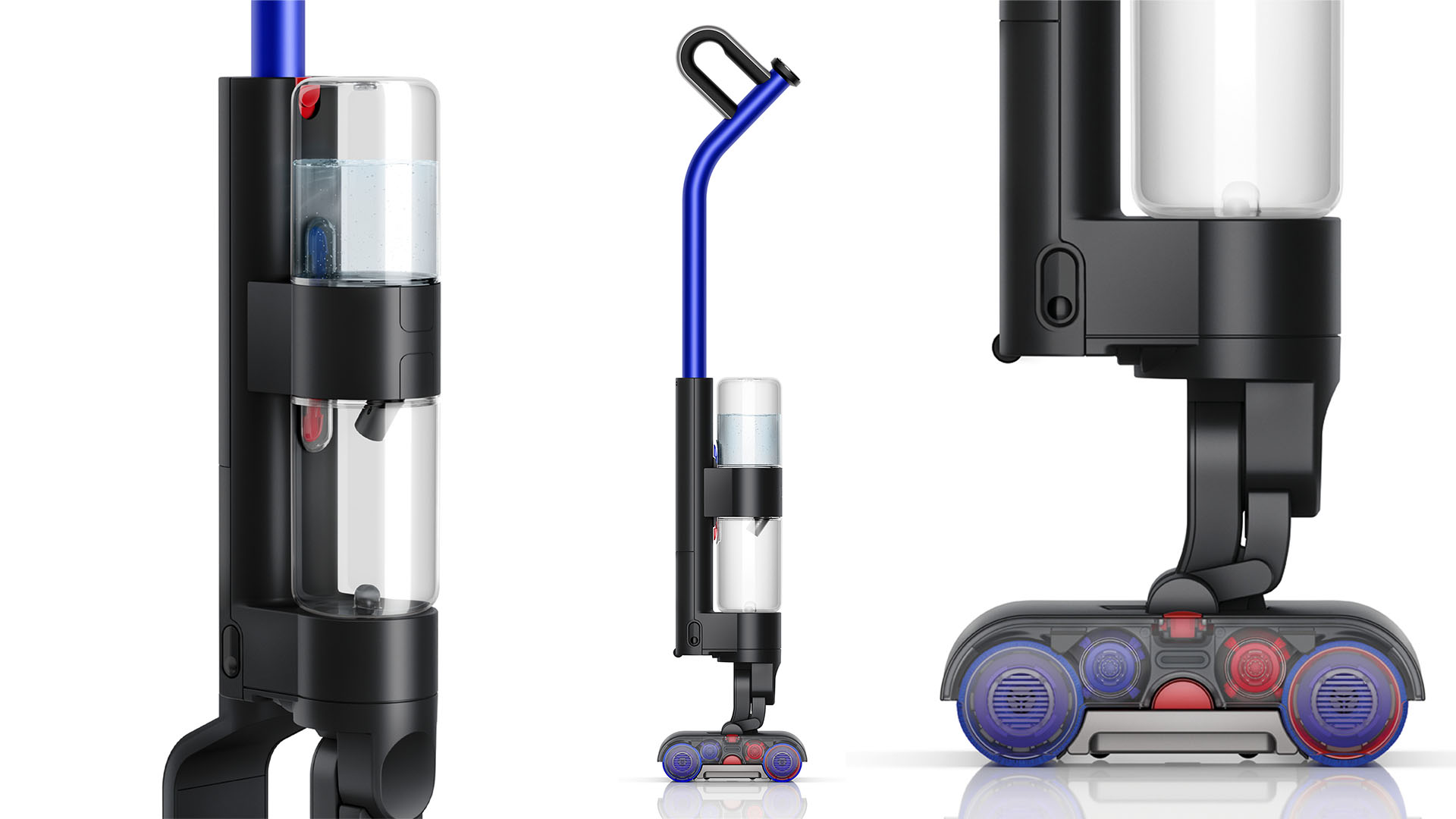
I had a chance to try one out ahead of its launch, on a visit to Dyson's Malmesbury campus, and overall I was impressed. There's no getting around the fact that a wet floor cleaner isn't quite a sexy as say, a new haircare launch (see: Dyson Airstrait) but it's quietly innovative and engineered with plenty of care and creativity, as we've come to expect from this brand. It also makes sense that Dyson explores this area, given the popularity of hard floors worldwide.
I'll update this hands-on article with a more detailed review when I've had a chance to try it out fully, but for now, read on for my first impressions on the Dyson WashG1.
Dyson WashG1: price & availability
The Dyson WashG1 will have a ticket price of £599.99 in the UK and $699.99 in the US. It will set you back AU$999 in Australia. We also don't have exact launch dates available for the US and UK, although it's said to be arriving 'later this year [2024]'. That said, the Wash G1 is available to buy direct from Dyson Australia from May 14, with the machine becoming available from authorized retailers at a later unconfirmed dated.
Dyson WashG1: design
- 3 hydration modes, plus a boost mode and a self-clean cycle
- Lightweight design with minimal dock
- Separates wet and dry debris for easier disposal
If you're imagining a bulky, unwieldy cleaner, you don't need to worry. The WashG1 is streamlined and lightweight.
Let's start at the bottom. Here, you'll find the cleaner head, which is about the size of an A4 piece of paper, but thicker (of course). Underneath are two microfiber rollers for wet spills, with a plate that presses into them to squeeze out dirty water. These use high-density microfiber, designed to be super-absorbent and grippy, and the rollers extend almost completely to the edge of the cleaner head, to help you get closer to the edges of rooms.
There are also secondary rollers with big nylon bristles (like those in a vacuum cleaner), designed to tackle debris and hair. A mesh inside siphons off the solid waste and channels it into a little tray that sits in the upper part of the cleaner head.
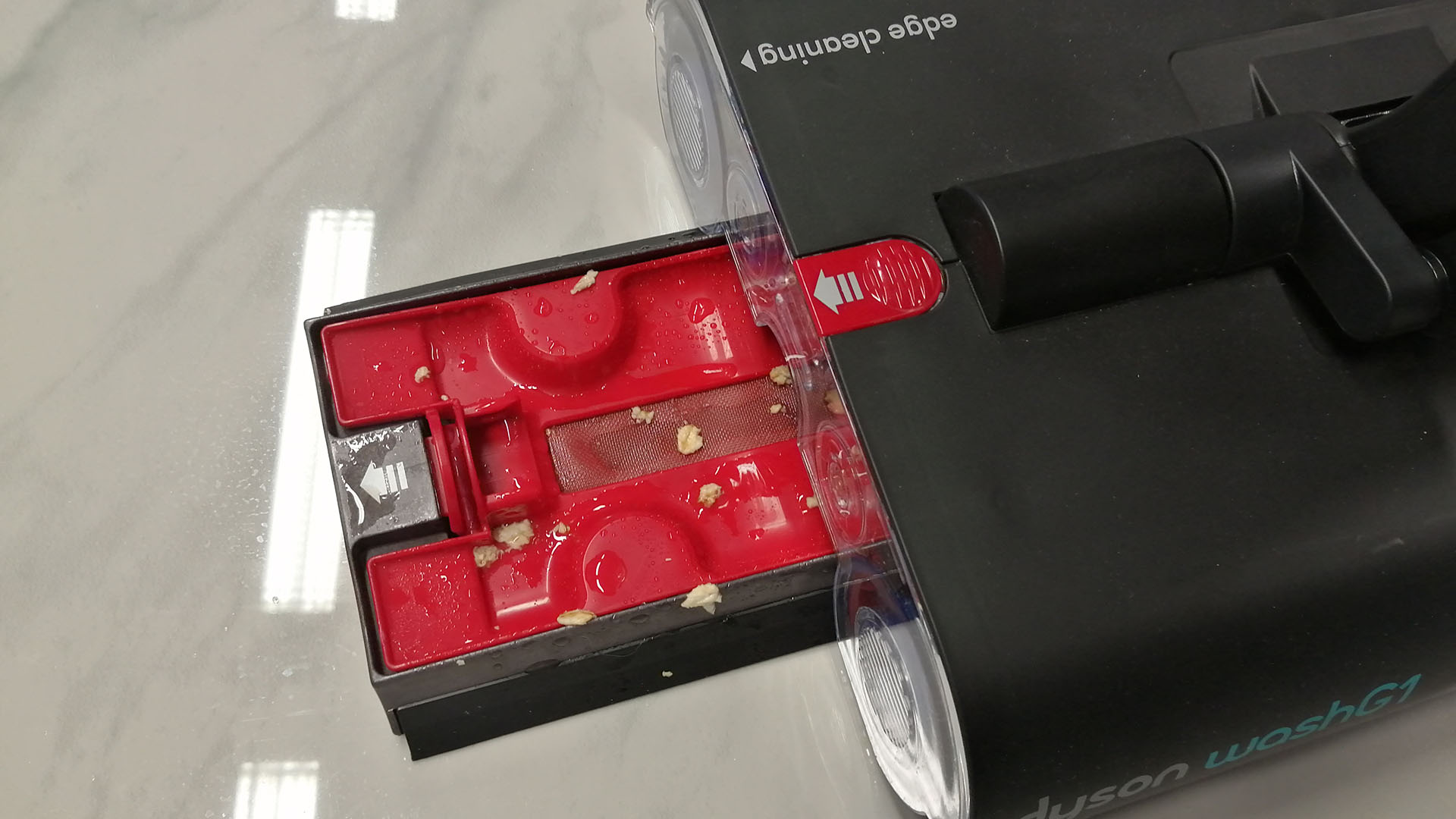
Clipped to the handle are the two water tanks – one for clean water and the other for dirty. Each holds a liter of water, which is designed to cover up to 290 square meters of floor. The tanks clip easily on and off the handle, and each is individually sealed with a screw top to prevent spillages.
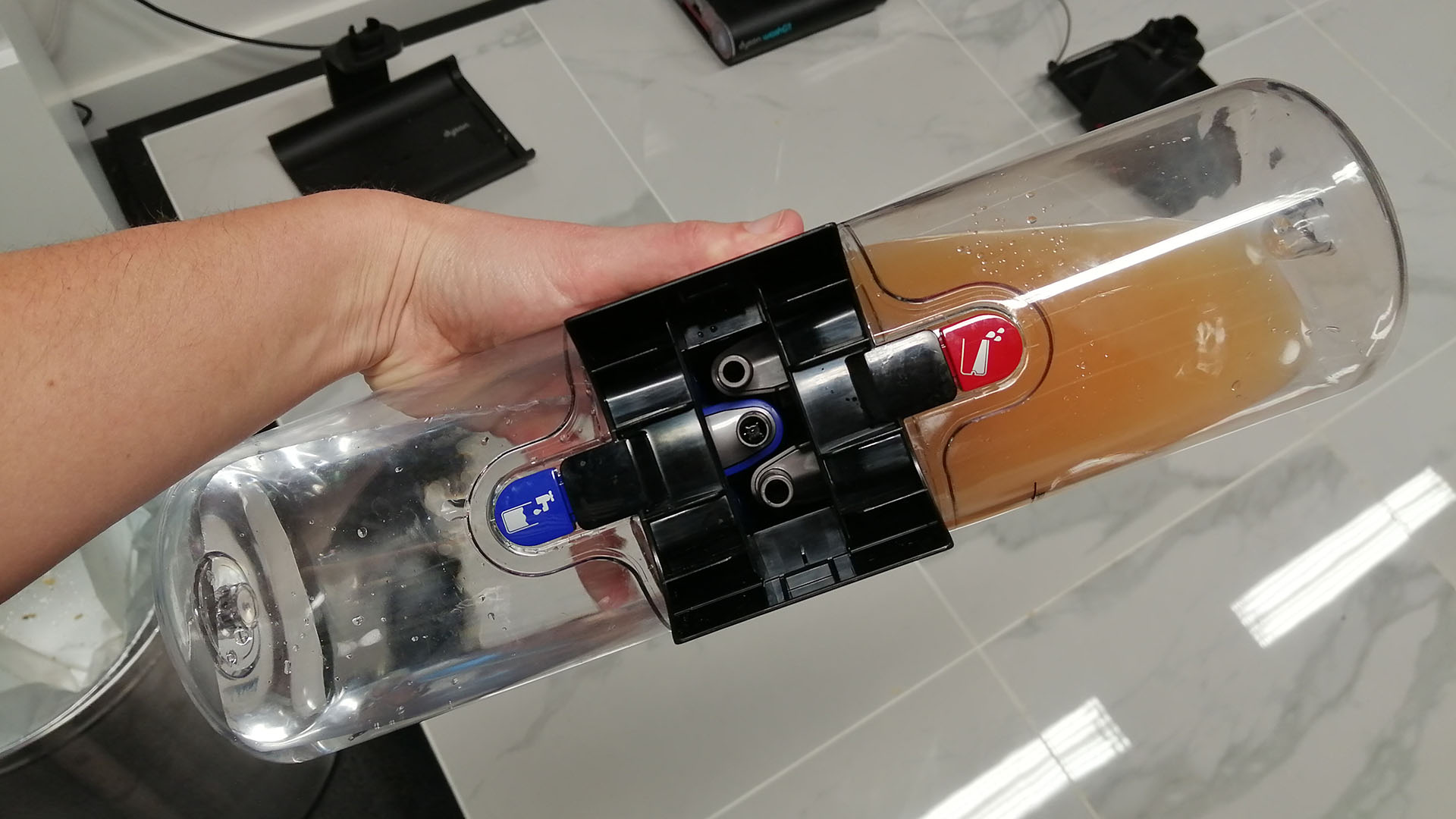
The charge stand is very minimal. It's only marginally bigger than the cleaner head itself and very lightweight – it actually feels slightly too insubstantial to me, but then it seemed to work fine in use.
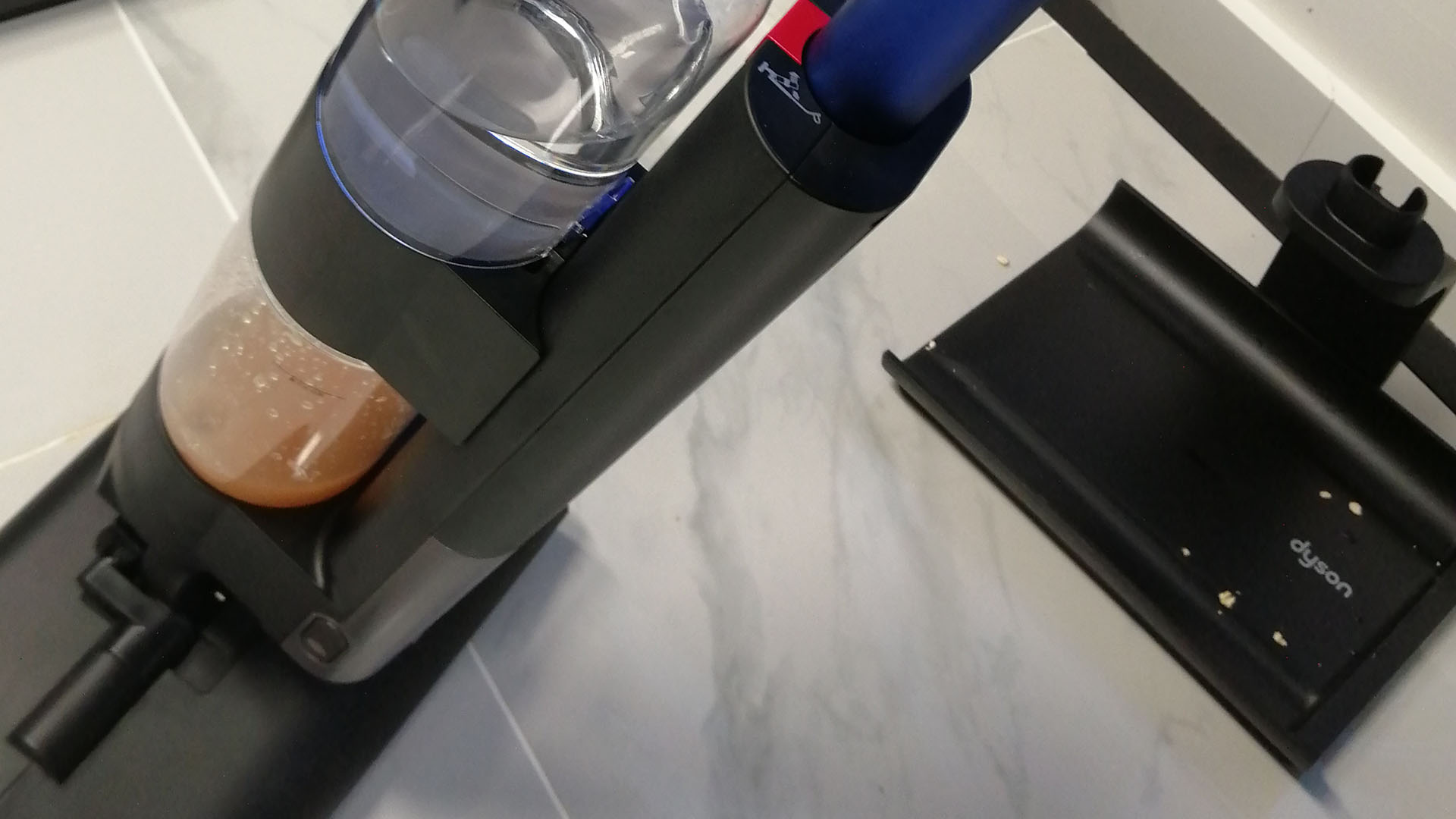
There are three different hydration modes, as well as a no-water mode and a Max mode, which adds even more water and is designed for ingrained dirt. The user selects which mode they want based on the type of flooring and how dirty it is. A button on the handle lets you cycle through the options, indicated by water droplet graphics on a screen that sits on top of the handle (Dyson is in the habit of adding little screens to all of its products at the moment, and the WashG1 is no exception.) You can activate the max boost by holding the same button down.
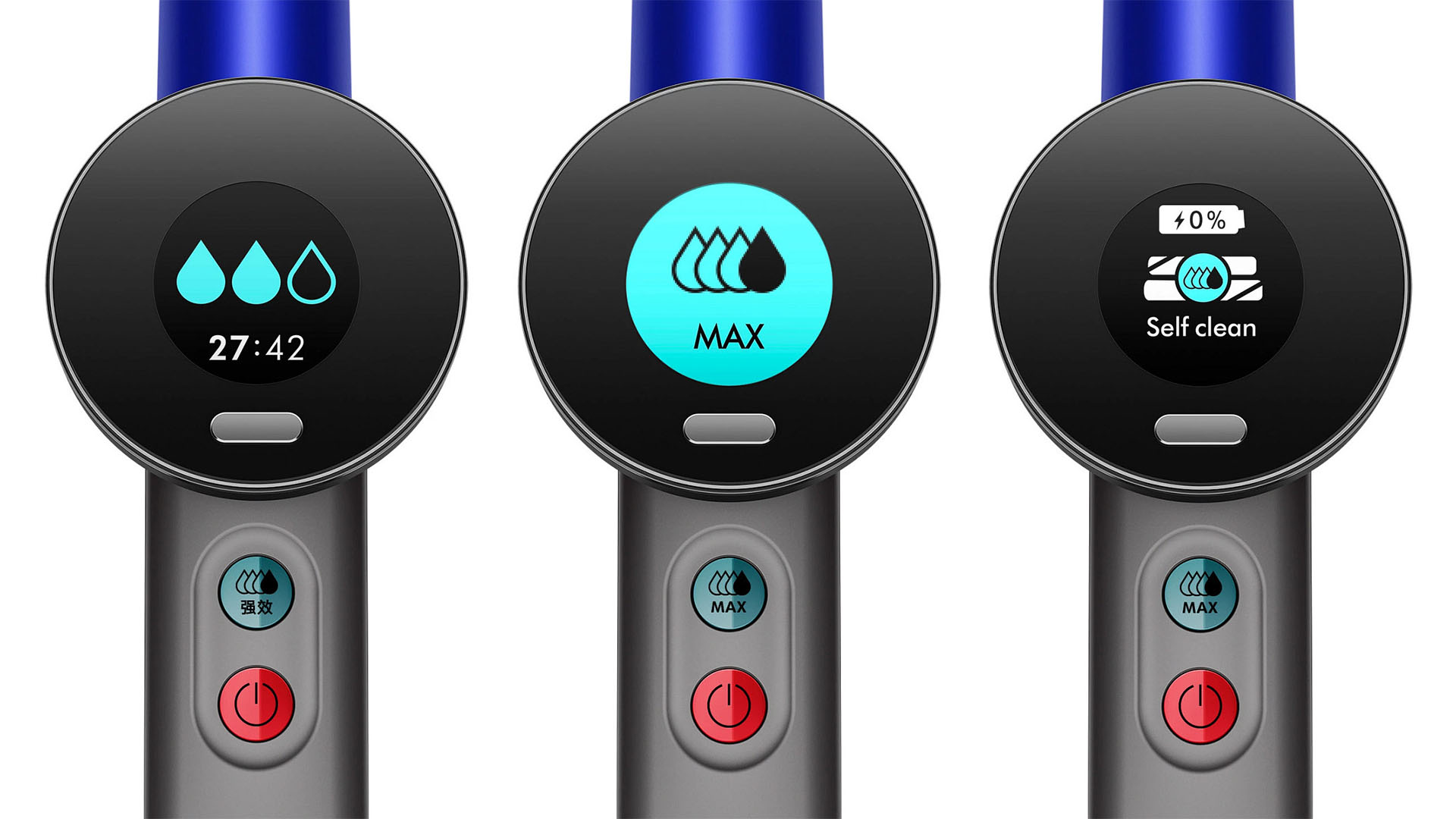
There's also a self-clean mode. This takes two minutes and can be activated when the WashG1 is on its charge stand. It runs clean water through the mechanism and over the rollers, uses a brush bar to remove any lingering solid debris from the rollers, and then does a no-water run to dry everything off a bit. It's designed for everyday maintenance after each use but must be supplemented with periodic deep cleaning (this is normal for wet cleaners).
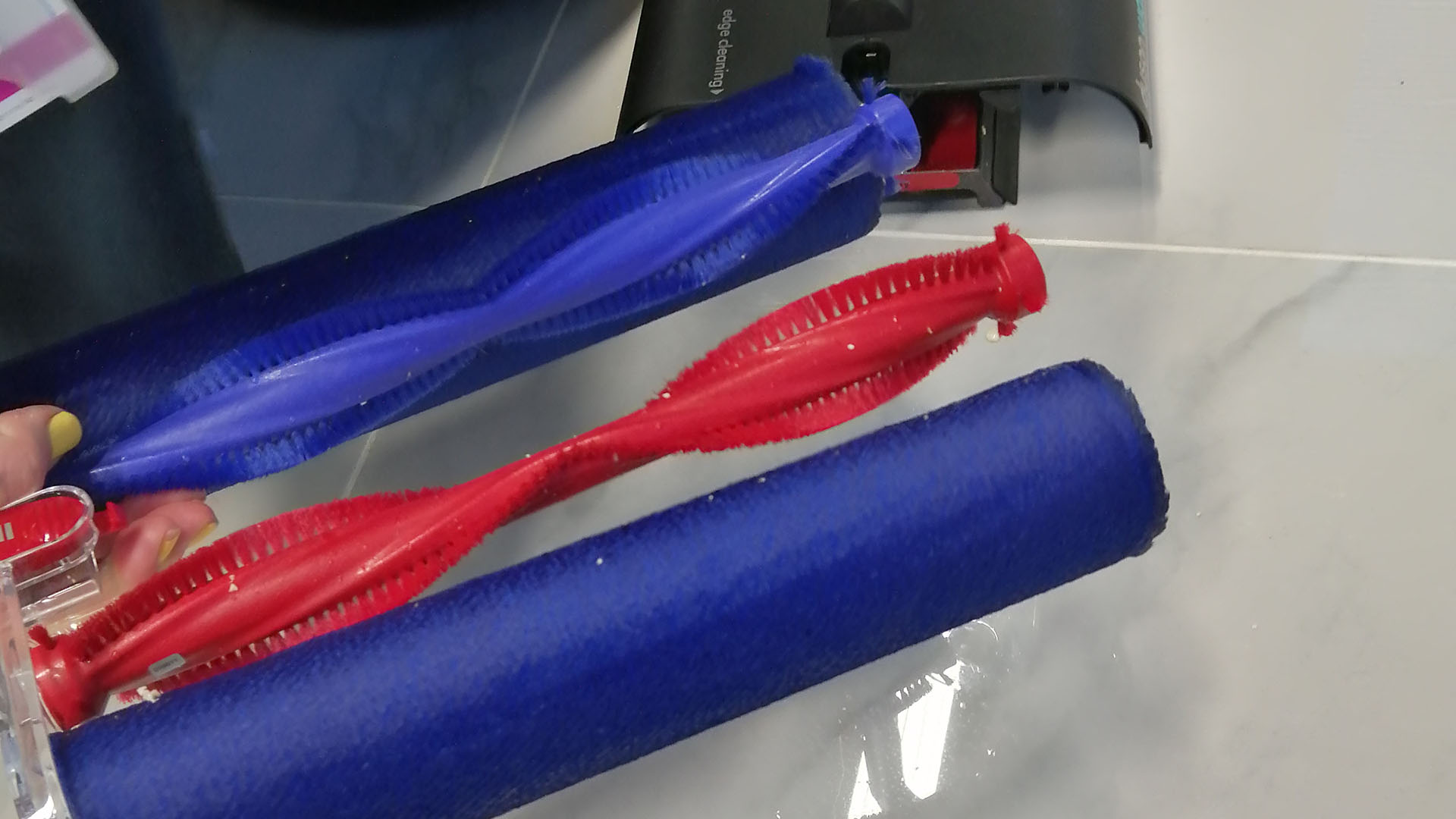
To deep clean, the rollers can easily be removed from the cleaner head. The water tanks can also be removed and are designed to be easy to clean – there are no sharp corners where grime could build up, and they're large enough that you can easily get your whole hand in there.
The rollers won't last forever. Exactly how often they need replacing depends on how much you're using the product, but Dyson estimates it at a minimum of six months.
Dyson WashG1: performance
I had a chance to test out the WashG1 on a tiled floor at Dyson's Malmesbury HQ, seeing how well it tackled spillages of unidentified yellow and red sauces (at a guess, ketchup and mustard, but I skipped the taste-test) as well as oats.
It easily tackled wet spillages – these disappeared completely with a single pass with the WashG1. It also picked up the oats with little fuss, although sometimes it'd take a couple of passes to get them all.
A Dyson engineer also demonstrated its use on a dried-on stain that had been there a few hours. It took quite a few passes before the marks disappeared, but it's worth noting that they didn't use Max mode (which is designed for these kinds of stains).
The rollers run right up to the edges of the cleaner head, which means you can get nice and close to the edges of the room. That's useful because there are no attachments for precision cleaning, as you'd find with vacuum cleaners, for instance.
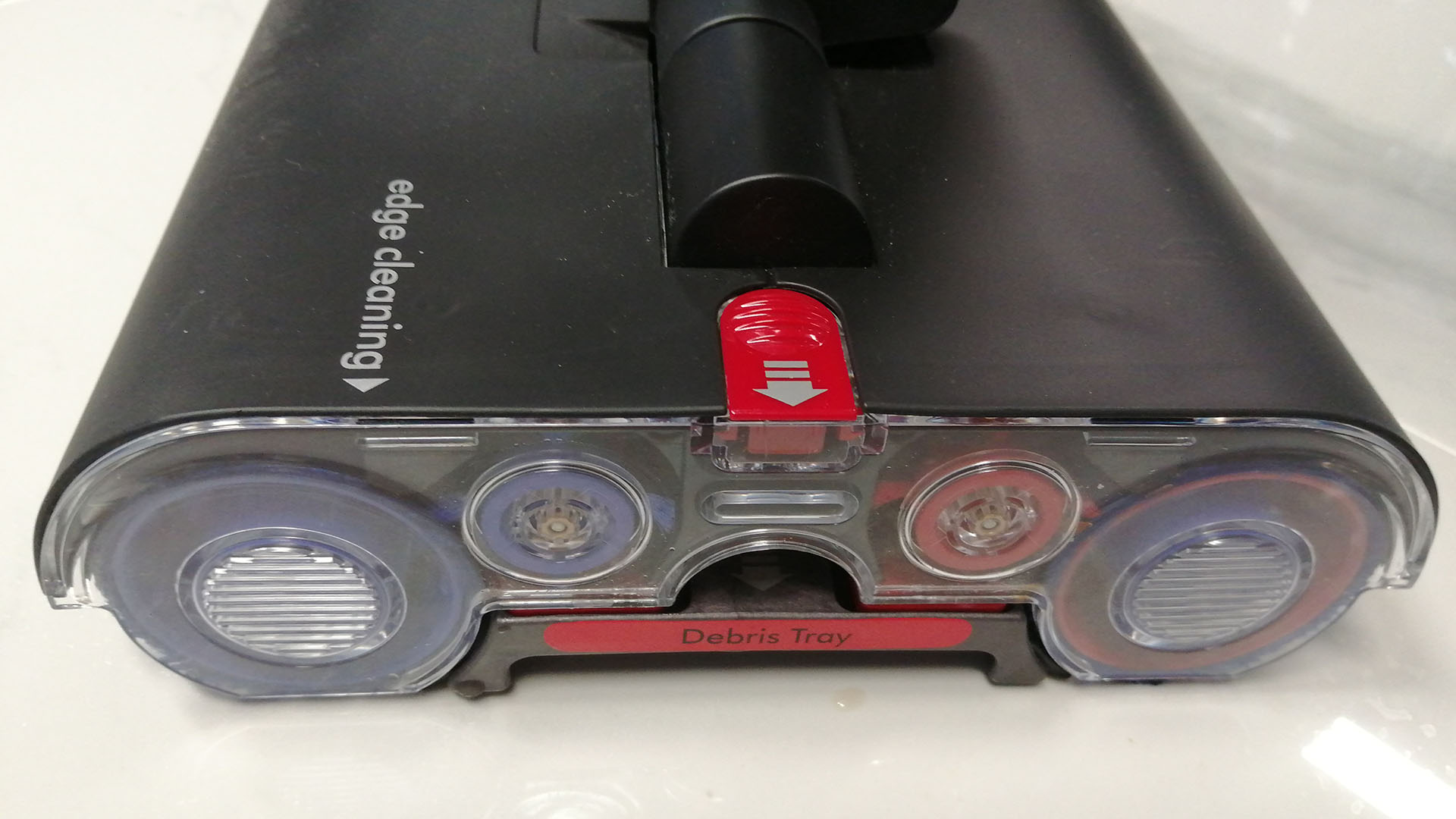
It doesn't feel especially aggressive in its agitation – the engineers explained that they found the best way to tackle ingrained spillages was by adding more water, hence the 'Max water' mode. In terms of noise levels, I'd it's say quieter than your average vacuum cleaner.
The splitting of wet and dry was effective based on my testing time, and it makes getting rid of the waste simpler. Rather than trying to flush everything down the toilet, dry waste can be tapped into a bin (which is a bit gross, but unavoidable) and the dirty water can be poured down the kitchen sink.
There were occasional unexpected dribbles of water when the WashG1 wasn't in use, like when getting the WashG1 off its dock or into place, the floor was left slightly wet, too.
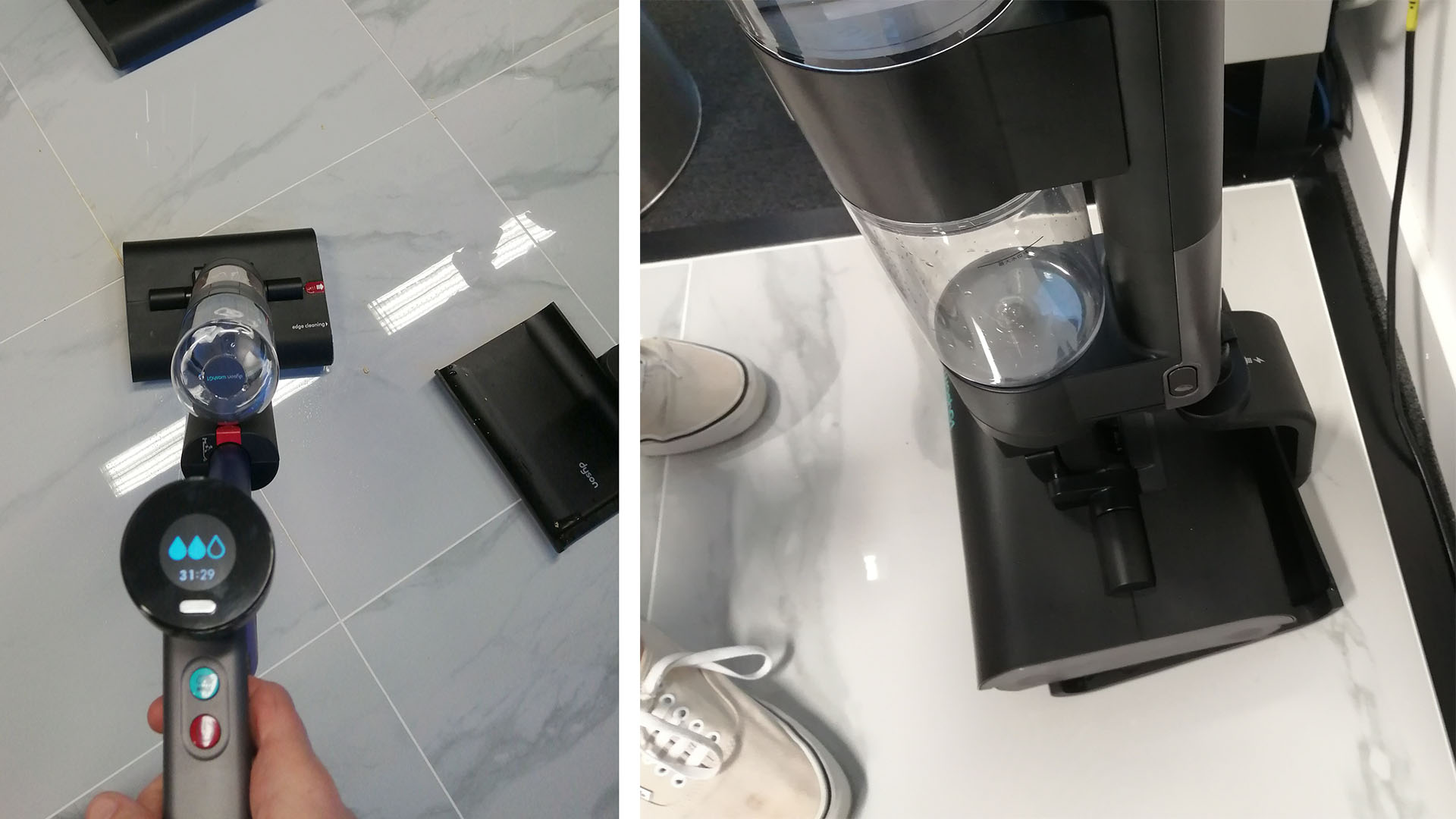
The WashG1 felt lightweight, comfortable to use, and easy to maneuver. Like Dyson's vacuums, cleaner head pivots fully so you can navigate around chair legs, around obstacles, and even under furniture.
The screen will sometimes display graphics showing you how to use the WashG1. I didn't find these graphics super easy to follow, but equally this device is pretty simple to use, so I'm not sure how useful the graphics will be in the long term.
Overall I was impressed by the WashG1 and I think it's a promising start for Dyson's first dedicated wet cleaner. I'll update this hands-on review with a more in-depth version when I've had a chance to try it out thoroughly at home.
Hands-on review: May 2024
0 comments:
Post a Comment